Your browser is not supported
Sorry but it looks as if your browser is out of date. To get the best experience using our site we recommend that you upgrade or switch browsers.
Find a solution
- Skip to main content
- Skip to navigation

- Back to parent navigation item
- Collections
- Sustainability in chemistry
- Simple rules
- Teacher well-being hub
- Women in chemistry
- Global science
- Escape room activities
- Decolonising chemistry teaching
- Teaching science skills
- Get the print issue
- RSC Education

- More navigation items
Source: Royal Society of Chemistry

Related video
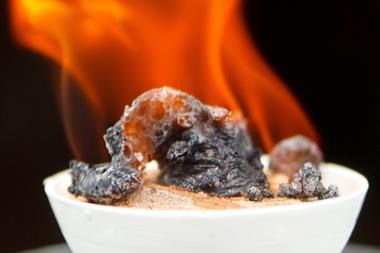
Don’t go breakin’ (down) my (love) heart

Scientist, food and pharmaceuticals
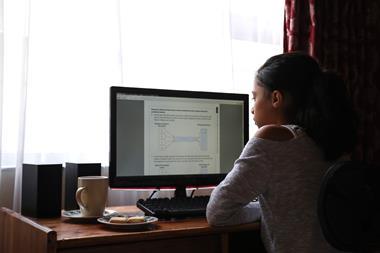
How to make effective use of pre-recorded lessons
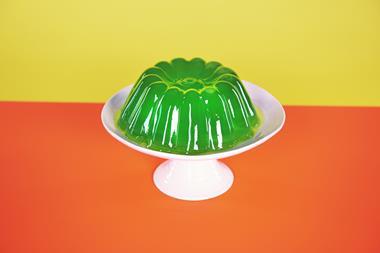
Using investigations to engage your 11–14 students

Use on-screen simulations to successfully boost data skills
It’s a scream.

Demonstrate energy release in action with the popular ‘screaming jelly baby’ experiment
Watch this
Watch the video and download the technician notes from the Education in Chemistry website: rsc.li/33eDCKO
Download this
The technician notes as MS Word or pdf
Download all
As a child I could put away sweets without a second’s thought for their energy content. As an abstract concept, energy is really difficult to visualise. You can look at the numbers on the back of a sweet packet and calculate that with just one jelly baby you’d have enough energy to run for a few minutes or bring a cup of water to the boil. However, a simple calculation doesn’t necessarily bring the idea home because we take the heating power of a kettle for granted and metabolic processes take their time. To get a real sense of what approximately 100 kilojoules look like in action, you need a speedy reaction that packs a visceral punch. Having a sympathetic figure to destroy in the process can’t hurt the storytelling either, and this is where the ‘screaming’ or ‘howling’ jelly baby demonstration can really help.
- 7 g potassium chlorate(V) – reagent grade (may cause fire or explosion, strong oxidiser, harmful by inhalation/ingestion, toxic to aquatic life)
- UK-style jelly baby sweet
- Clean borosilicate boiling tube
- Bunsen burner
- Clamp stand and clamp (without rubber grips)
- Safety screen(s)
- Face shield
- Heat-resistant gloves
- Heat-resistant mats
Preparation
Set up this practical in the middle of a well-ventilated room, well away from the walls and with the windows wide open. Ensure there are no smoke detectors. You will need at least 2–3 metres of bench space, perpendicular to the audience. Protect the bench with heat-resistant mats. Set up safety screens to protect the audience and the demonstrator, and to ensure no ejected particles can come into contact with combustibles.
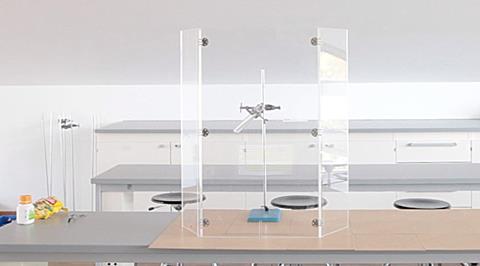
Source: © Declan Fleming
Make sure to select a bench in the middle of the room, with the benchtop protected and the boiling tube pointing along it
Weigh out 7 g of reagent grade potassium chlorate(V) and add it to the bottom of a thoroughly clean borosilicate boiling tube clamped at an angle steeper than 45° (so that the sweet will drop straight to the bottom of the tube) over a Bunsen burner. Line up the tube to point along the bench, away from the audience and demonstrator as well as from walls, displays and windows.
In front of the class
Students should remain 3–4 metres away wearing eye protection. The demonstrator should wear a face shield and heat-resistant gloves. Heat the base of the tube with the Bunsen burner until the potassium chlorate(V) just melts. Then do not wait : immediately remove the flame and drop in the sweet using a pair of tongs in your gloved hand.
Teaching goal
This demonstration is all about the drama, but a discussion of the energy on display is always helpful to anchor students’ understanding of this concept. According to the packet, the UK jelly baby is approximately 75% sugar by mass, with each sweet delivering approximately 100 kilojoules of energy.
Assuming no heat loss, this would be sufficient to raise just over 300 cm 3 of water from 20°C to 100°C or, based on figures from Harvard Health Publishing , for a 70 kg person to:
- sleep for about 30 minutes
- walk for about 4 minutes
- cycle for about 2 minutes
- or sit in your class for another 10 minutes!
Health and safety
- CLEAPSS members should consult the Special Risk Assessment for this demonstration ( SRA001 ), which was last updated in November 2019. Always check for the most up-to-date guidance.
- The use of sodium chlorate(V) is not advised. The potassium chlorate(V) must be reagent grade and the boiling tube must be absolutely clean and free of impurities, the presence of which have been suspected of causing accidents.
- The sweet must be a UK-style jelly baby. Other sweets such as gummi bears or sour versions of the same sweet must not be used as the ingredients in these sweets have been suspected of being involved with explosive accidents. The UK-style sweet has a high moisture content and relatively low surface area to mediate the reaction – sugar is not a suitable replacement (a completely different demonstration should be performed here at a much lower scale – CLEAPSS members can consult SRA032 ).
- Always practise in advance and do not deviate from the protocol or scale up – accidents have occurred.
- Wear a face shield and use safety screens to protect both audience and demonstrator. Students should remain 3–4 metres away.
- Do not use a fume cupboard – it will be overwhelmed by the fumes. A recirculatory fume cupboard has caught fire.
- The clamp should not have rubber grips, which could melt.
- All surrounding surfaces, screens, mats and the clamp stand should be washed thoroughly to remove any traces of ejected potassium chlorate.
Technician notes - screaming jelly baby
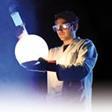
More Declan Fleming
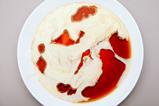
Experiment with surface tension and curious convection currents
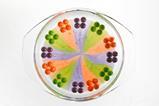

Dissolve coloured sweets to create a rainbow

Demonstrations with dry ice
- Secondary education
Latest videos

2024-12-16T06:46:00Z
By Declan Fleming

2024-10-21T05:02:00Z
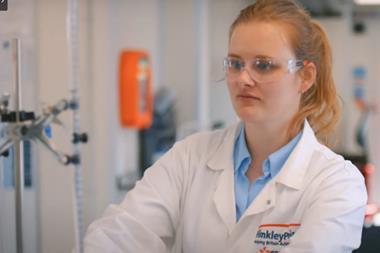
Chemistry engineer, nuclear
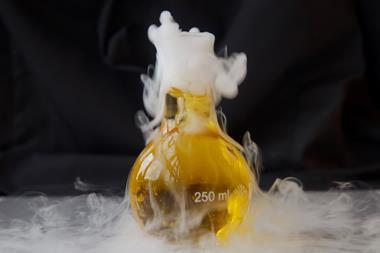
2024-08-27T06:00:00Z

Research scientist, microplastics
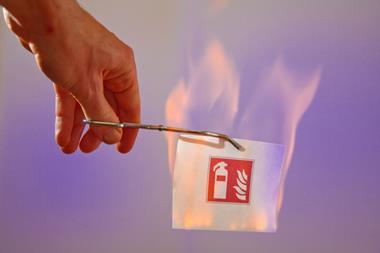
Non-burning paper: investigate the fire triangle and conditions for combustion
2024-06-10T05:00:00Z
Related articles

2020-04-20T09:33:00Z By Declan Fleming
Teach chemical change and the thermal stability of carbonates with this simple demonstration using sweets

Measuring energy changes
2019-10-17T09:56:00Z By Derek Denby
Get practical with students and arm them with the skills and knowledge they need

How to teach Maxwell–Boltzmann distribution curves at post-16
2024-11-18T07:00:00Z By Matt Wilson
Enhance learners’ knowledge and understanding of reaction kinetics and how to interpret graphs
1 Reader's comment
Only registered users can comment on this article., more exhibition chemistry.

2024-12-16T06:46:00Z By Declan Fleming
Use this demonstration when teaching concentration gradients, diffusion and convection at 11–16

2024-10-21T05:02:00Z By Declan Fleming
Demonstrate diffusion, density and the particle model to your 14–16 learners in this easy experiment

2024-08-27T06:00:00Z By Declan Fleming
Explore changes of state and neutralisation reactions with this trio of demonstrations using solid carbon dioxide
- Contributors
- Print issue
- Email alerts
Site powered by Webvision Cloud
- Create account
- Contributions
- Discussion for this IP address
School Science/Screaming jelly babies
Screaming jelly babies is a chemistry demonstration which is practised in schools all over the United Kingdom. It is often used at open evenings to demonstrate just how much fun secondary school science can be.
This demonstration nicely shows just how much energy there is in a "jelly baby". Potassium chlorate is a very strong oxidizing agent that oxidises the sugar in the jelly baby all at once. The following text gives an explanation of how to perform the experiment. This should only be done by an experienced chemist or chemistry teacher.
- Make sure test tube is completely clean. Any trace of an oxidisable material can cause an explosion.
- Surround the apparatus with safety screens.
- Ensure the pupils/audience are seated several metres away and that they are wearing eye protection.
You will need
- Jelly babies
- Large test tubes
- Clamp Stand (retort stand)
- Potassium chlorate
- Access to a fume cupboard
- Bunsen burner
- Safety goggles
- Fire resistant surface
1)Put 12-15g potassium chlorate in large test tube. 2)Clamp the tube in a clamp stand at approx. 60° (just off the vertical) then melt the powder with a Bunsen burner. Make sure you are wearing safety goggles. 3)Turn the Bunsen off, then, using tongs and wearing heat resistant gloves stand to the side of your boiling tube, drop in the jelly baby and stand well back.
If you follow the instructions above precisely then the jelly baby should burst into flames with a strange, high pitched noise (screaming). There will also be a lot of smoke so open a window. Do NOT touch the boiling tube for at least 5 minutes unless you have protection on.
- Book:School Science
- Mailing List
- Terms and Conditions
- © Copyright Notice

THE SCREAMING JELLY BABIES
The “screaming jelly baby reaction” is a demonstration of the exothermic reaction between a sugar-rich treats such as a jelly baby and molten potassium chlorate (V), a strong oxidising agent. The reaction produces a loud “screaming” sound, a bright white flame, clouds of smoke, and a caramel aroma (Hmmmmmm.... tasty! But don't eat them! No Jelly babies? Try a gummy bear instead if you prefer destroying sweet shaped bears instead of innocent jelly creatures. Watch the video to see those jelly kids suffer and then try the exercise below to see if you understand what is going on!
KNOWLEDGE TEST!
Yikes! There are some horrible chemical equations in the two pictures below which shows what happens in this reaction. Can you explain in your own words what is happening in each photo? Not sure? Hover over the images to find out.

There is lots of useful high school Chemistry occurring in this reaction. Great revision for assessments. These include:
• The concept of energy and how it is released when chemical bonds are broken and formed. The reaction is highly exothermic , meaning it releases a lot of heat energy to the surroundings .
• The role of oxidation and reduction in chemical reactions. The reaction involves the transfer of electrons from the jelly baby (the reducing agent ) to the potassium chlorate (V) (the oxidising agent ). The candy is oxidised , meaning it loses electrons and increases its oxidation state. The potassium chlorate (V) is reduced , meaning it gains electrons and decreases its oxidation state.
• The effect of surface area and concentration on the rate of reaction . The reaction is very rapid and vigorous because the candy has a large surface area exposed to the molten potassium chlorate (V), which is highly concentrated. This increases the frequency and effectiveness of collisions between the reactant particles, leading to a faster reaction rate . The reaction would be much slower and less dramatic if the candy was in a solid lump or if the potassium chlorate (V) was diluted .
• Health and Safety Gone Mad! The reaction is very dangerous and should only be carried out by teachers, or experts, in a well-ventilated room, with safety screens, eye protection, face shield, heat-resistant gloves, and tongs. The potassium chlorate (V) is oxidising, harmful, and toxic to aquatic life so make sure there are no fish of dolphins in the vicinity. It should be kept away from any combustible material or reducing agents. The reaction may also produce toxic gases such as chlorine dioxide and carbon monoxide , which should be dispersed quickly. To be honest, it's easier just to watch the video!
KEY FACTS AND CHEMISTRY KNOWLEDGE

- Publications
- Homepage >
- Resources >
- Chemistry Resources >
- Chemistry Resource List >
Screaming Jelly Baby
(d) A classic demonstration of the oxidising power of potassium V chlorate
A small amount of potassium chlorate(V) is placed in a Pyrex boiling tube.
The tube is clamped at a slight angle to the vertical and the potassium chlorate(V) is heated until it melts.
The demonstrator then drops a jelly baby into the melt.
The sugar in the jelly baby reacts vigorously with the potassium chlorate, burning with a lilac flame and lots of vapour is ejected making a roaring sound – the ‘scream’.
Screaming Jelly baby- Risk Assessment
SSERC is a Company Limited by Guarantee and a registered educational charity.
Headquarters 1-3 Pitreavie Court, South Pitreavie Business Park, Dunfermline, KY11 8UU
Registered Office Morton Fraser MacRoberts LLP, Level 5 9 Haymarket Square Edinburgh EH3 8RY
Material on this website, including text and images, is protected by copyright. It may not be copied, reproduced, republished, downloaded, posted, broadcast or transmitted in any way except for your own personal, non-commercial use, or for educational use. Prior written consent of the copyright holder must be obtained for any other use of material. Copyright in all materials and/or works comprising or contained within this website remains with SSERC and other copyright owner(s) as specified. No part of this site or sub-domains of this site may be distributed or copied for any commercial purpose

We use cookies and similar methods to recognize visitors and remember their preferences. To learn more about these methods, including how to disable them, view our Privacy Policy .

IMAGES
COMMENTS
Jan 4, 2021 · To get a real sense of what approximately 100 kilojoules look like in action, you need a speedy reaction that packs a visceral punch. Having a sympathetic figure to destroy in the process can’t hurt the storytelling either, and this is where the ‘screaming’ or ‘howling’ jelly baby demonstration can really help. Kit
The screaming jelly baby Description Also known as the ‘howling jelly baby’ this spectacular demonstration involves the exothermic reaction of a ‘jelly baby’ with molten potassium chlorate. 15 g of solid potassium chlorate is heated until completely molten and then a jelly baby is dropped into the liquid. The exothermic reaction with the
Jan 4, 2021 · As an abstract concept, energy is difficult to visualise. In this article and video, Declan Fleming shows you how to give students a real sense of what 100 k...
The experiment is practised in schools around the world and is often used at open evenings to show the more engaging and entertaining aspects of science in secondary education settings. [2] [3] The experiment shows the amount of energy there is in a piece of candy. Jelly babies [4] or gummy bears [5] are often used for theatrics.
The howling (or screaming) jelly baby is a popular demonstration in chemistry. This video is aimed at teachers and it explains how to do it safely - and hor...
Also known as the screaming jelly baby experiment. Useful for KS3 and KS4. The reaction involves adding a jelly baby to heated 15g of Potassium chlorate in a...
Mar 2, 2018 · This demonstration nicely shows just how much energy there is in a "jelly baby". Potassium chlorate is a very strong oxidizing agent that oxidises the sugar in the jelly baby all at once. The following text gives an explanation of how to perform the experiment. This should only be done by an experienced chemist or chemistry teacher.
SRA001 - The howling/screaming jelly baby. A complete set of risk-assessed instructions for safely demonstrating this exciting chemical reaction. View / Download.
The “screaming jelly baby reaction” is a demonstration of the exothermic reaction between a sugar-rich treats such as a jelly baby and molten potassium chlorate (V), a strong oxidising agent. The reaction produces a loud “screaming” sound, a bright white flame, clouds of smoke, and a caramel aroma (Hmmmmmm.... tasty! But don't eat them!
The demonstrator then drops a jelly baby into the melt. The sugar in the jelly baby reacts vigorously with the potassium chlorate, burning with a lilac flame and lots of vapour is ejected making a roaring sound – the ‘scream’. Screaming Jelly Baby. Screaming Jelly baby- Risk Assessment